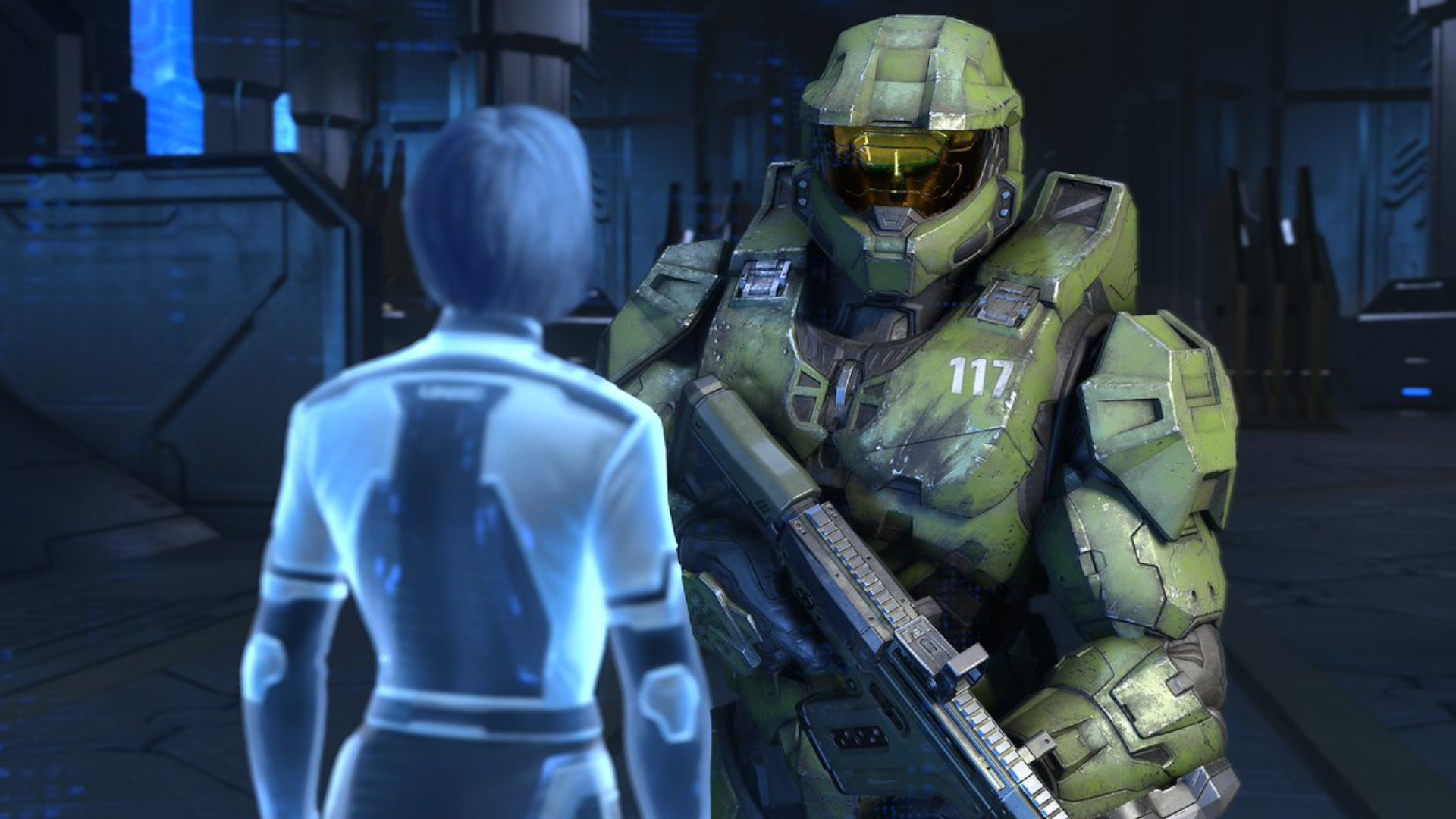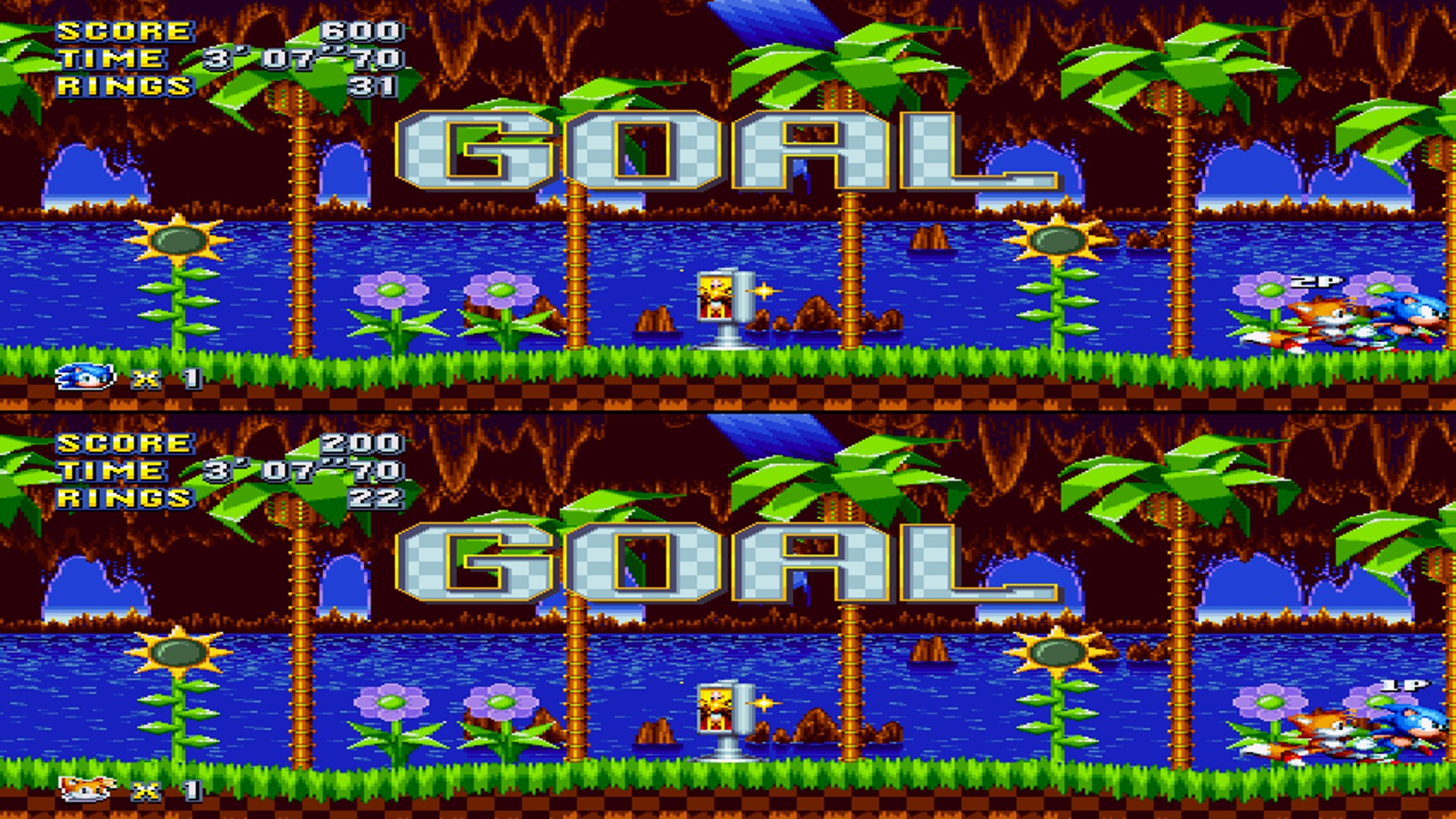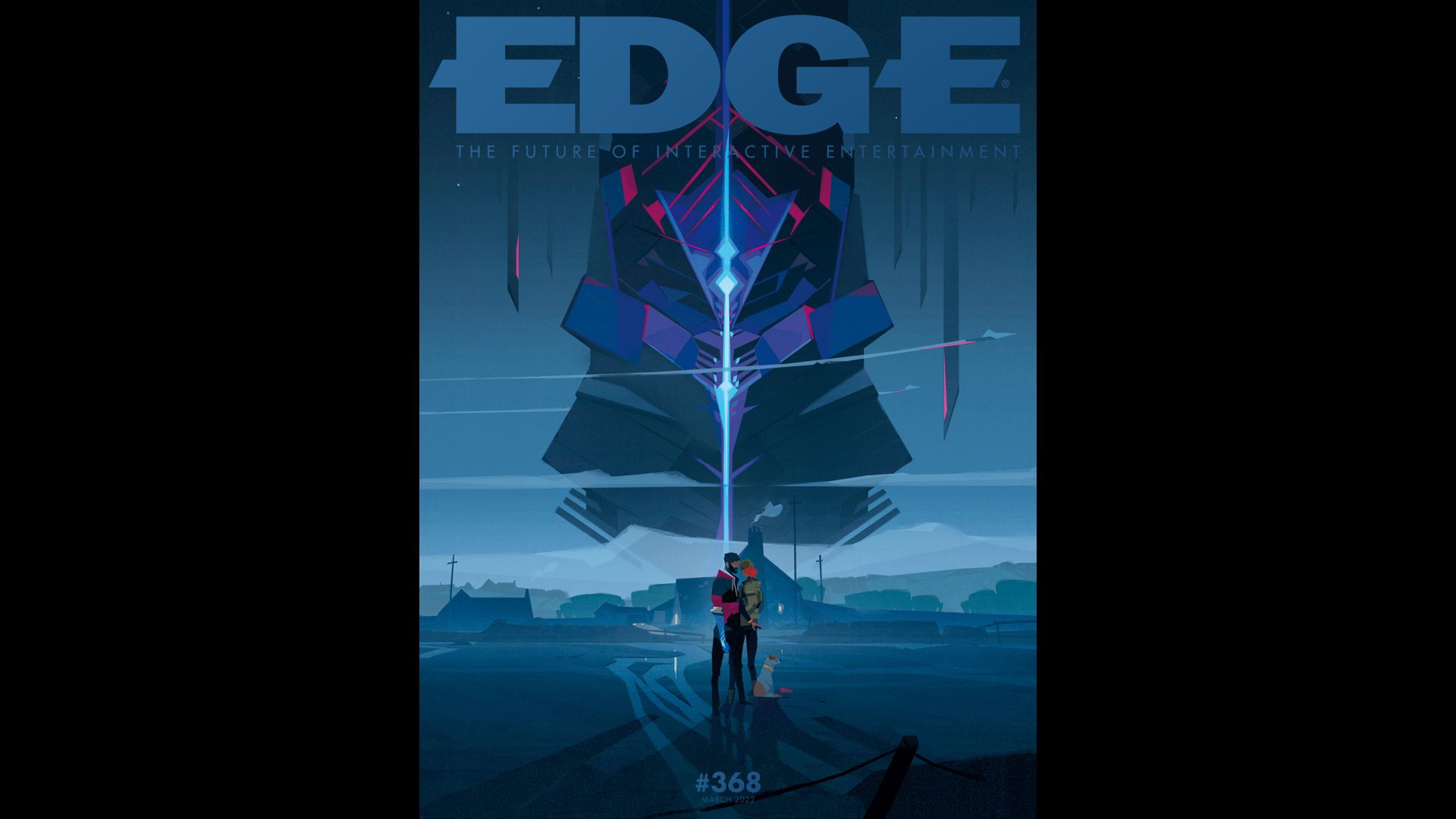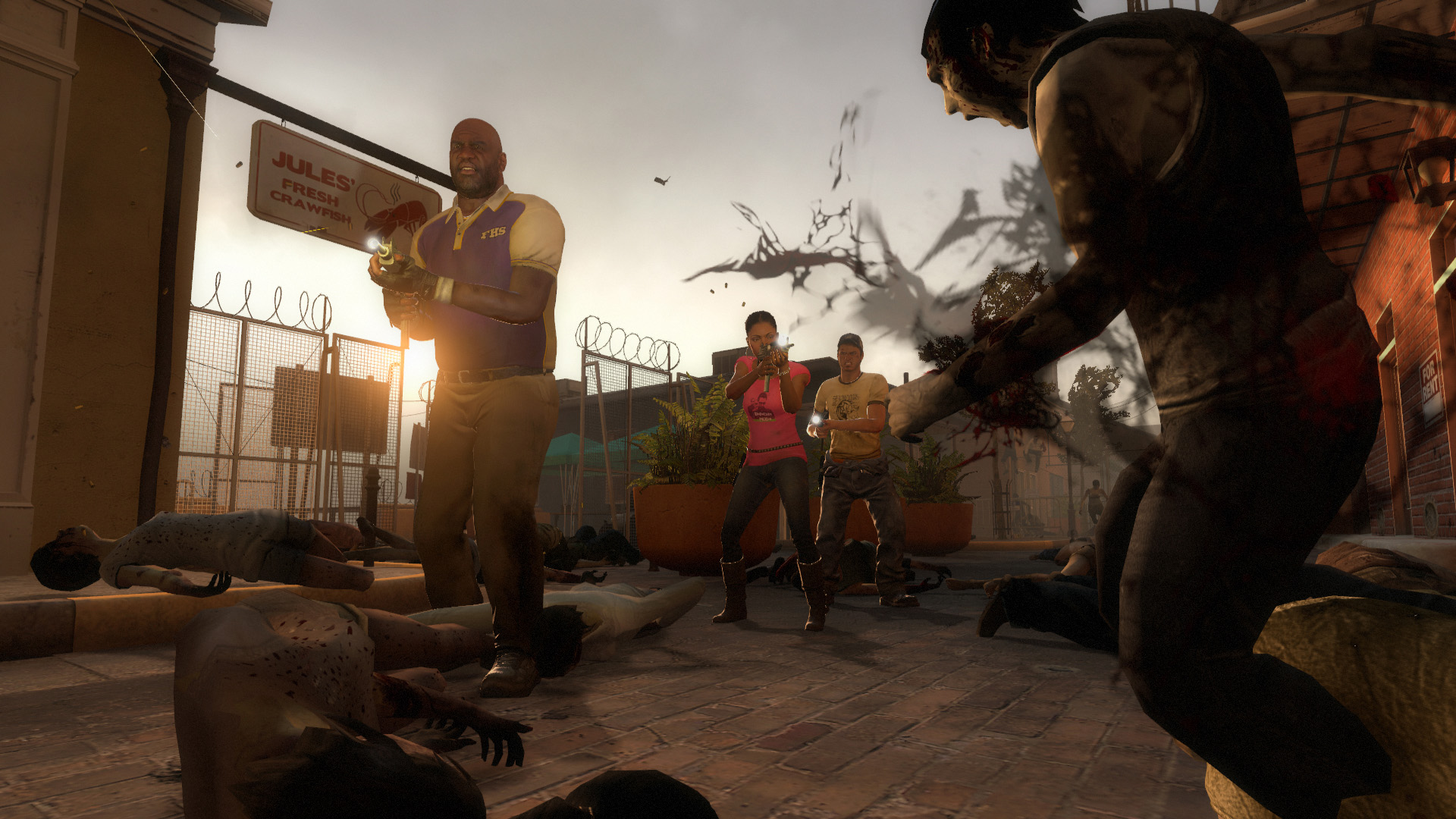The rise, fall, and curious afterlife of splitscreen multiplayer
Charting the winding path of one of video games' most familiar yet unusual features

Lucas Assislar has a bone to pick with the Halo series. A software developer from São Paulo whose projects include retro VR homage Pixel Ripped 1989, Assislar grew up playing Microsoft's flagship shooter, but has since fallen out of love with it thanks to Halo 5: Guardians' lack of offline co-op support.
"[My friend and I] played through the entire series together, like, oh my god, Halo 1, Halo 2, Halo 3, ODST – it was an amazing experience," Assislar says. "When Halo 5 released without splitscreen, that was like a smack in the face." This shift is indicative of the current fortunes of splitscreen multiplayer. Once all but expected of any mass-market release, it has been wiped from the feature sheets of all but a handful of blockbuster games – an entire way of playing that is dying a long, slow death. Assislar is part of a small but resourceful group of indie coders trying to keep it alive.
"In 2012 I got a new gaming PC, and it was bundled with Borderlands 2 [but] I couldn't play with my friend because he didn't have a PC. So I found a guide on the Gearbox forums and it was like 30 minutes of setup – it was way too hard. So I was like, 'I'm a programmer – I can make this go way easier'."
Seeing double


This feature originally appeared in Edge magazine. For more in-depth features interviews delivered to your door or digital device, subscribe to Edge magazine.
Thus the almost-accidental birth of Nucleus Co-op, a free open-source splitscreen tool that is now compatible with hundreds of PC games, even ones not designed for splitscreen, including the likes of Skyrim and Dark Souls. Nucleus functions by launching the game twice or more and assigning each instance a window and controller input, using 'symlinks' to connect them. "Borderlands 2 was actually one of the easiest to work on, because they had a command where I could say, 'expect input from gamepad one', or 'expect input from gamepad two', and the game just worked," Assislar says. "But that's not the same for others. There's a library called x360ce for emulating gamepads – I had to fork the library and actually make a custom DLL specifically for Nucleus [to support two controllers]."
In the decade since the initial release, Nucleus has become a sprawling community effort, passed from hobbyist to hobbyist. "I made a version that had support for seven games, [including] Resident Evil 5, Left 4 Dead 2, and it stayed like that for like a year. Then ZeroFox, a game developer, one of the most amazing guys, took over my project." Assislar and his collaborators are folk heroes in the PC gaming community, but as he readily admits, Nucleus is an imperfect remedy for the absence of in-house splitscreen. It requires more resources than official splitscreen support, and Assislar is more than a little frustrated about the lack of response from the developers of Nucleus-compatible games – though he adds that Gearbox, at least, has quietly acknowledged his efforts by patching Borderlands 2 to avoid crashing the tool.
"We don't want Nucleus to be needed," he points out. "It's needed because the companies don't care." Why, then, has splitscreen run out of road? The obvious answer is that online multiplayer has stolen its audience – and that is certainly a factor. But Giles Goddard suggests its decline goes back further still, to the rise of polygonal 3D worlds. As one of the first westerners to work in-house at Nintendo in Japan, as 16bit gave way to N64, Goddard was at the forefront of this shift. From both a technical and a business point of view, splitscreen made more sense during the era of sprites and 2D backdrops, he says. "It was actually quite easy to do splitscreen on SNES, because you could change the [graphics] mode halfway down the screen," Goddard recalls. "You could basically have different modes at the top and bottom of the screen if you wanted, or reset the settings for the mode at the top or the bottom."
Paradoxically, though, the advent of 3D also gave rise to many of the most celebrated splitscreen games: the likes of Mario Kart 64, GoldenEye and, a generation on, the aforementioned Halo. Games that, as David Roberts, Rockstar Leeds alumnus and creative director of Red Kite Games, points out, offered something akin to the experience of a late '90s PC LAN party, for a fraction of the cost and effort. "Early splitscreen games removed a lot of the barrier of entry for players who wanted to game with their friends. Players didn't need to spend time hauling PCs to their friends' houses."
Weekly digests, tales from the communities you love, and more
There was a tradeoff for this, of course – in 3D, splitscreen meant rendering worlds several times from each player's perspective. "All the calculations had to be done twice," Goddard says. "So it would basically halve your frame rate, doing a splitscreen game. You'd have to do so many compromises to get the framerate back up. It was a lot nicer doing splitscreen in sprite-based games where you're just sort of changing numbers, rather than rendering an entire world." Goddard worked on several splitscreen titles during his career at Nintendo, including 1080° Snowboarding and Stunt Race FX. He found the process to be a mixed experience. "I remember on Stunt Race, the amount of compromise you had to do to get two screens working – you're basically carving huge amounts out of the game entirely. And it was just: are people going to spend their time playing this, if there's virtually nothing there, nothing left of the screen, nothing left of the game?"
The ups and downs


Save up to 52% on gaming magazine subscriptions for the perfect holiday gift
The compromises in question varied by the game type. "It's one reason why rear-view mirrors may not be shown in local co-op racing games," Roberts notes. "In open world or large environment games where players can get far apart from each other, the streaming system is under greater demand as a larger amount of the world needs to be loaded into memory." Assislar now faces a similar problem with Nucleus, only moreso: "It's always heavier than if the developer itself did the splitscreen, because Nucleus has to run the game twice. If you have the splitscreen developed by the company, you can run, say, the physics simulation once [for all players]." If a game normally requires 8GB of RAM, you'll typically need at least 16 to play it in Nucleus – and the more times you split the screen, the higher the load on your system. These pressures became more telling as screen resolutions increased, and players clamoured for ever higher-fidelity graphics.
"I think that triple-A and double-A games pushing aggressively for production values meant that art directors didn't like splitscreen," says Nicholas McDonnell, managing director of Australian developer Samurai Punk. "Marketing teams, as well. It's a feature that takes time, and on top of that you either have to make the game look terrible, potentially, or you have to have a simple art style that scales really well." Alongside that graphical push, of course, came the acceleration of online multiplayer. It's not as simple, though, as one form of multiplayer cleanly succeeding the other; the years since the initial flourishing of broadband and services such as Xbox Live have seen a tug of war for developer resources.
Supporting online and offline play created the risk of fragmenting the game's multiplayer audience. Hjalmar Vikström began his career working on the Ghost Recon: Advanced Warfighter games – products of this transitional period, which offered local, online and LAN multiplayer – before co-founding GTFO developer 10 Chambers in 2015. The studio has considered adding splitscreen to its moody squad shooter, he says, but this will only happen if the game is ported to console. And it seems even more unlikely that it will offer any integration between local and online play – as in, say, Left 4 Dead 2, where two players on one machine can team up with others anywhere in the world – something Vikström says entails a lot more toil than developing each by itself.
"If you argue time and money, it's hard to do them together," he says. "And this saddens me because I really love splitscreen, but it's hard to justify when it's so hard to make games anyway. I can see how that's gone out of fashion." Nonetheless, there are a few larger teams that are prepared to put the extra hours in. Among them is Larian Studios, whose Divinity: Original Sin games are as much a love letter to classic splitscreen experiences as to pen-and-paper tabletop RPGs. "Original Sin 1 was made for co-op because [founder and creative director] Swen Vincke said, 'I haven't played an RPG with my wife in ages'," world building director Farhang Namdar recalls, "'and I think it would be fun. There's a lot of couples or siblings or whatever who would like to play the game together'." Larian's engine programmers were less than thrilled by the idea. "They said: 'We'd have to render this thing twice. It's going to be an extreme burden, and then forget about consoles – that's never going to happen'."
As lead game designer at the time, Namdar himself had reservations about the idea. For one thing, adding local multiplayer to a console game involves meeting an additional set of technical certification requirements. "If you're doing online multiplayer, there's already about 60–70 TCRs that you need to comply with. But then if you're doing local co-op, there's also a whole bunch. So in production terms, just meeting the platform requirements for these things – like, what happens if player two pulls their joypad out?" In keeping with its general kitchen-sink approach to game development, Larian did manage to bash together a splitscreen mode nonetheless, but the feature was too raw to ship with the initial release. It was added with the Enhanced editions the following year. Even then, it took a minor breakthrough from the engine side to bring the feature to fruition: "We were going to render the scene twice, but somebody came up with an idea that meant we could just share the resources [between cameras]."

If Divinity: Original Sin's splitscreen features were an exhausting gamble, the payoff is a fascinating twist on the already chaotic business of Divinity multiplayer – not just a throwback to the days of SNES or N64 co-op, but proof that there are still types of splitscreen experience waiting to be invented. Take the implications when playing as characters with conflicting narrative arcs. "Those were your personal quests that you had to complete, which were a secret from the other party members, right?" Namdar notes. "So if you're playing on your PC, you can say, 'Yeah, I'm going off into the wilderness – I'll be right back', which was already fishy. But if you're playing splitscreen, it really requires some very inventive fooling of your teammate to go out on some kind of secret mission, or just have a dialogue while they're not paying attention. It's extremely fun."
The same goes for the quintessentially Larian prank of sneaking objects into your partner's inventory to get them into trouble. But there are also benefits for players who – shock – want to help each other. "Just pointing out things just by being next to each other, or opening up a book and reading it together on one person's screen. Or: 'I'm at the shop, what do you need?' And then you can just look at their inventory while you're stuck in a fight." Possibilities that demonstrate how splitscreen has been "neglected", Namdar concludes. "There's huge potential to do really fun stuff." For further evidence of that potential, see Samurai Punk's Screencheat – which, as its name suggests, makes a virtue of the old splitscreen gambit of spying on your opponent's viewpoint. In this GoldenEye-like cat-andmouse shooter, every player is invisible, and must deduce the others' locations by comparing screens.
Screencheat began life as an entry to Global Game Jam 2014 responding to the theme 'We don't see things as they are, we see them as we are'. At first, it was to be a co-op exploration of how different species saw the world differently. "There were going to be two different animals, and they had completely different perceptions," McDonnell says, with puzzles built out of the gaps in understanding that created. The problem was that co-op players could see each other's viewpoints, removing the need to communicate about their experiences. Wrestling with this problem led to the realisation that this screen-peeking could be the basis for a game all by itself. You can play the latest, remastered version of Screencheat on Switch. For many developers and players, Nintendo's hybrid handheld, with its detachable Joy-Cons ensuring local multiplayer was available right out of the box, seemed to promise the Second Coming of splitscreen. Sadly, it hasn't proved quite that transformative in practice.
"I think Nintendo has always wanted local play to come back into fashion," Goddard says of his experiences working in-house across several Nintendo consoles. "[But] when they looked at the numbers, no matter what they did, it never really took off past the sort of singleplayer-type stuff. The reason they made the Wii U was because they wanted to get kids playing the game when the family was watching TV. I think the Switch came from that idea, and then they found out that, actually, most kids don't even bother connecting to the TV any more, [it's all] handheld, and that's why they made the Switch Lite." As suited as the game might seem to the console, releasing on Switch hasn't proved transformative for Screencheat. "We thought it could do pretty well; in the end of the day it did fine," McDonnell says. He adds that, "[if you're an indie] you're trying to be on everything anyway, because it's the only way to survive. You can't just be like, 'This is the platform for splitscreen games – it justifies the existence of a splitscreen game'."
Friendly fire

If few developers can make an unanswerable business case for splitscreen these days, we've yet to speak to a developer who is happy with its demise. "Realistically, the percentage of players who will play a local co-op or competitive mode in your game is small unless you are making a sports or party game," Roberts concludes. "However, on a personal level I still think nothing beats the feeling of playing a game together next to each other." This isn't just a question of nostalgia, but of community and accessibility. The greatest gift of splitscreen is surely the ability to give in turn, to share a game with somebody who might not have the means to play it themselves. Namdar notes that players have become reliant on online spaces for that sense of companionship.
"The whole arcade thing of playing games together is really gone. That's very unfortunate. And it started really disappearing with the Xbox 360 generation." Even McDonnell, whose game is built on the unique qualities of splitscreen, confesses to seeing it as a "tangential" phenomenon – but one worth resurrecting. "I like to co-op with someone I live with. As a kid, I had a neighbour. As an adult, I have a partner. I want something that we can regularly play comfortably."
It's not all doom and gloom, however. Hazelight's It Takes Two proves there's still an appetite for splitscreen games, and if larger studios now prioritise overall production values and online play, most seem aware that for many of their customers, local multiplayer is worth a few sacrifices. "I don't care about performance, I don't care about the visual quality," Assislar says. "I just want to play with my friend. I bought Halo 5 because I had an Xbox One. My friend had a PS4. There is no solution there. I'm not gonna say 'buy an Xbox so we can play'. I would play this game in 480p, on a CRT, just so that I can play with my friend."
This feature first appeared in Edge magazine. For more fantastic in-depth features and interview, you can pick up a single issue over at Magazines Direct or subscribe.


